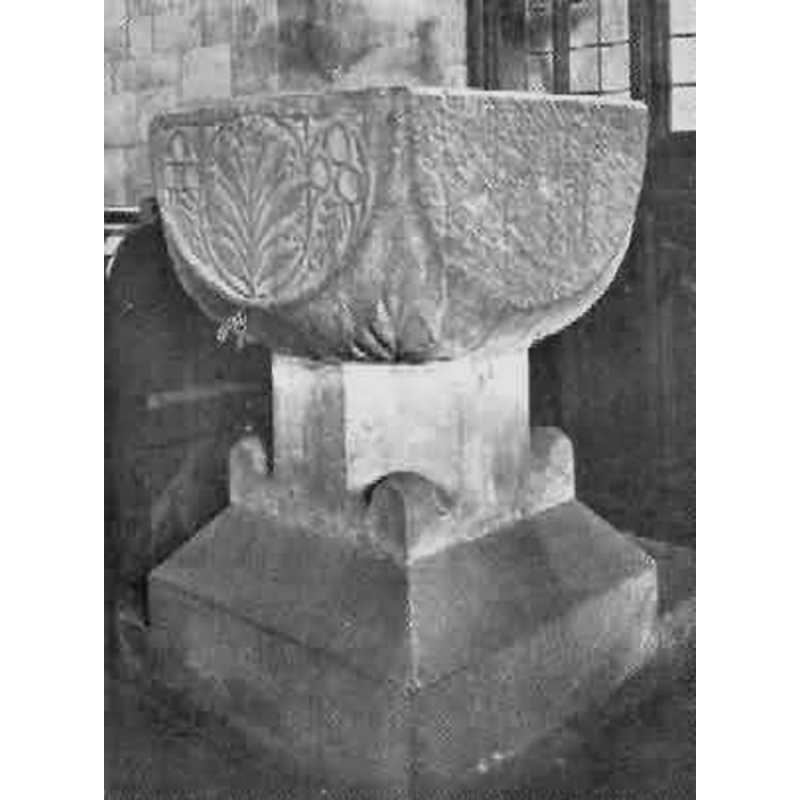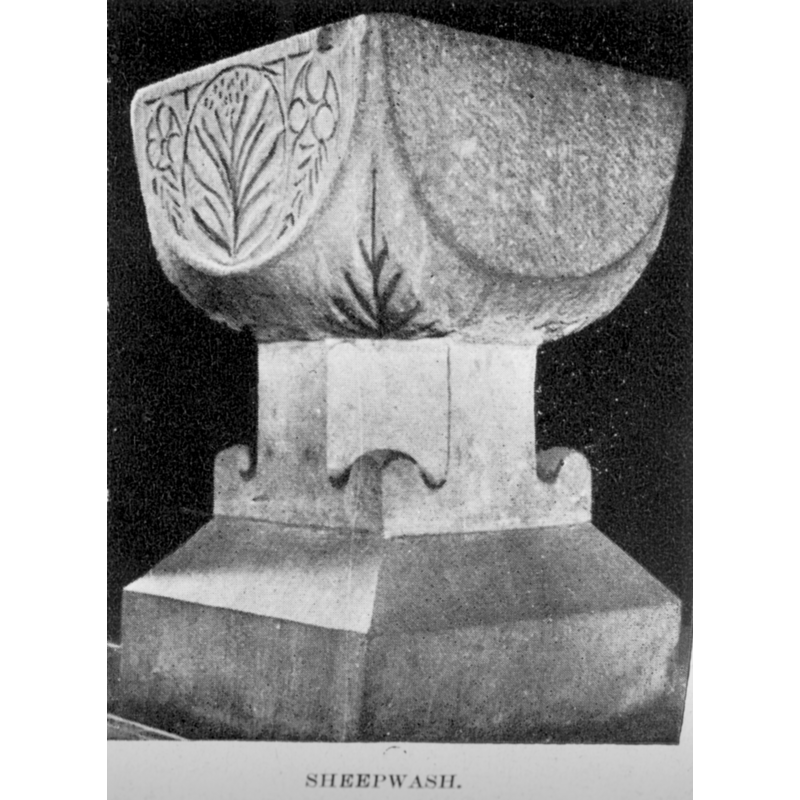Sheepwash / Shipwash

Image copyright © Roger Peters, 2005
Permission received (email of 9 January 2005)
Results: 4 records
B01: design element - motifs - floral or foliage - in a circle
BU01: design element - motifs - foliage
view of font
INFORMATION
FontID: 10376SHE
Object Type: Baptismal Font1
Church/Chapel: Parish Church of St. Lawrence
Church Patron Saints: St. Lawrence [aka Laurence] [former dedication: Holy Sepulchre]
Country Name: England
Location: Devon, South West
Directions to Site: Located off the A386, 15 km NNW of Okehampton
Font Location in Church: Inside the church
Century and Period: 12th - 13th century, Late Norman / Transitional?
Cognate Fonts: The font at Inwardleigh, also in Devon
Credit and Acknowledgements: We are grateful to Dr. Roger Peters, of www.wissensdrang.com, for his permission to use the transcription of and image from Stabb (1908).
Font Notes:
Click to view
Described in Lysons (1806-1822): "At Shipwash [i.e., Sheepwash] the font is square upon the top, curved below, and connected with a plain octagonal base upon which it stands. Three sides of the font are plain; the fourth, enriched with foliage slightly carved upon its surface." [NB: the spelling 'Shipwash' is noted in the 19th century for 'Sheepwash', a parish in the Hundred of Shebbear. "Sheepwash, or Shipwash" appears in White's Devonshire Directory of 1850 -- cf. Brian Randell's transcription of this entry in www.cs.ncl.ac.uk/genuki/DEV/sheepwash/]. Lewis' Dictionary of 1848, which has "Sheepwash, or Shipwash", reports: "the church was dedicated to the Holy Sepulchre, and the beautifully-formed basin of its font is still preserved." Noted in Stabb (1908), with an illustration, as "an old Norman font". The font is described and illustrated in Clarke (1919): "An old cushion bowl on a modern shaft and plinth in a modern church. The semicircular eastern face is filled with ornament very similar to that at Inwardleigh; a graceful arrangement of a flowering plant with spreading leaves, contained in a circle. Each side of the circle is a pine-shaped panel with a filling of three rings and a digitated leaf. The whole design is well managed and excellently balanced. The horizontal edge at the rim has a square moulding. The other faces of the bowl are plain, and I strongly suspect they have been planed down, as the edge mouldings are absent, and on the northern and western sides there seem to be traces of vanished ornament. At the four points below the corners there are graceful foliage designs. A patch of new stone is inserted on the south side. The bowl is made of the grey stone of the district, and is the only ancient part [...] The semicircular faces almost touch at the rim, but I think this is the result of the cutting down, and that originally it had rounded corners like Inwardleigh." [We are grateful to Dr. Roger Peters, of www.wissensdrang.com, for his permission to use the transcription of and images from Stabb (1908)]
MEDIUM AND MEASUREMENTS
Material: stone, grey stone (local)
Font Shape: square (mounted)
Basin Exterior Shape: square
Rim Thickness: 6.25 cm [calculated]
Diameter (inside rim): 45 cm*
Diameter (includes rim): 57.5 cm*
Basin Depth: 20 cm*
Basin Total Height: 40 cm*
Height of Central Column: 25 cm*
Font Height (less Plinth): 67.5 cm*
Notes on Measurements: * [measurements given in inches in Clarke (1919: 221)]
REFERENCES
Clarke, Kate M., "The baptismal fonts of Devon -- Part VI", 51, Report and Transactions of the Devonshire Association for the Advancement of Science, Literature and Art, 1919, pp. 211-221; p. 212, 216-217, 221 and pl. II (opp. p. 215)
Lewis, Samuel, A Topographical Dictionary of England, Comprising the Several Counties, Cities, Boroughs, Corporate and Market Towns, Parishes, Chapelries, and Townships, and the Islands of Guernsy, Jersey, and Man, with Historical and Statistical Descriptions [...], London: S. Lewis, 1831
Lysons, Daniel, Magna Britannia, being a concise topographical account of the several counties of Great Britain, London: Printed for T. Cadell and W. Davies, 1806-1822
Stabb, John, Some old Devon churches, their roods, pulpits, fonts, etc., London: Simkin, [et al.], 1908-1916
